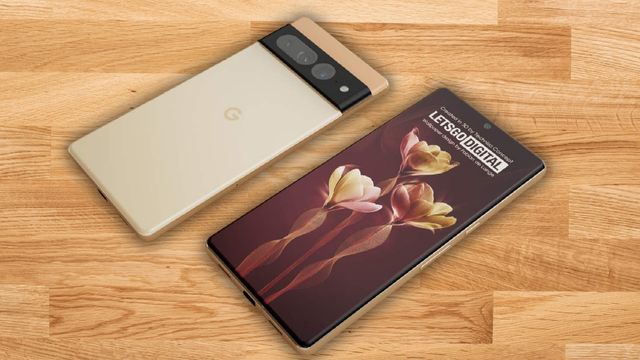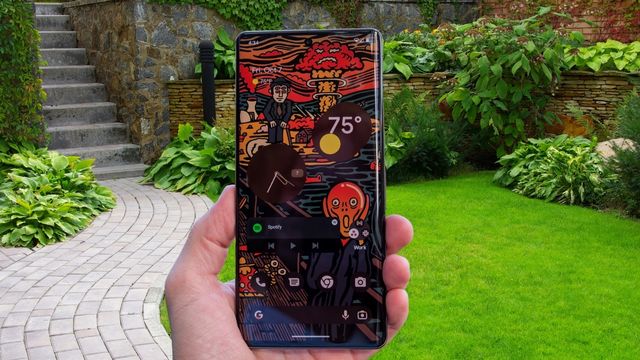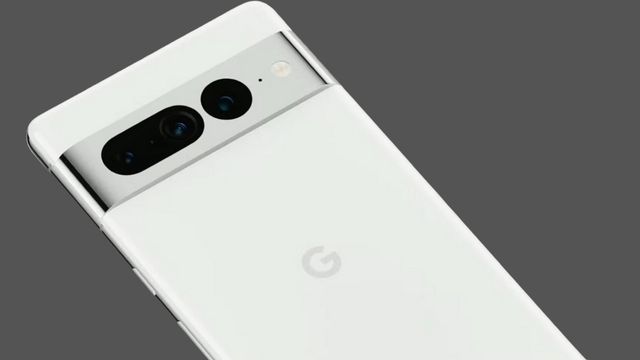The Pixel 7 Pro proves that Google is truly serious about its smartphones. With a beautiful and sleek design, this new flagship goes to great lengths to be the best Android phone, and believe me; it comes as close as possible to that title. Thanks to its great camera, new Tensor G2 chip, bright display, and excellent price, the Pixel 7 Pro may become my new favorite Android device. This phone has too amazing features that were not expected in the google pixel 7 pros; why you should buy and read the full review.
The Galaxy S22 Ultra better watch out because the Pixel 7 Pro is significantly cheaper than Samsung’s top handset; Google’s latest device fixes many of the problems I had with the Pixel 6 Pro last year, including a faster fingerprint sensor and improved battery life The Pixel 6 Pro is now available with a new fingerprint sensor and a new battery life.
Google’s updated Tensor G2 silicon is another point in the Pixel 7 Pro’s favor; not only is the chipset in this year’s phone much faster than the first generation (only slightly behind the Snapdragon 8 Gen 1 in our tests), but it also offers a ton of new AI and machine-learning tricks that are unique to the Pixel 7 Pro (and Pixel 7). Seriously, some of these new features are wild, like Photo Unblur and faster Night Sight.
Price & Specifications
| Price | Starting at $899 / £849 / AU$1,299 |
| Android version | 13 |
| Display | 6.7-inch OLED (3120 x 1440) |
| Refresh rate | 10-120Hz |
| CPU | Tensor G2 |
| RAM | 12 GB |
| Storage / Expandable: | 128GB, 256GB / No |
| Rear cameras: | 50MP (f/1.85) main, 12MP (f/2.2) ultrawide, 48MP (f/3.5) 5x telephoto |
| Front camera: | 10.8MP (f/2.2) |
| Battery: | 5,000 mAh |
| Battery life | (Hrs: Mins): |
| Charging: | 30W wired, fast wireless |
| Size: | 6.4 x 3 x 0.3 inches (162.9 x 76.6 x 8.9 mm) |
| Weight: | 7.5 ounces (212g) |
| Colors: | Obsidian, Snow, Hazel |
As you can see in this review of the Pixel 7 Pro, Google has beaten it hands down. This phone takes the vision started with the Pixel 6 series and takes it to the next level.
Google Pixel 7 Pro review: Design

The metal camera rubber blends seamlessly into the frame or the prominent camera lens that immediately catches the eye; the Pixel 7 Pro is a beautiful device in all three color options.
Google Pixel 7 Pro review: Display

The Pixel 7 Pro features a 6.7-inch OLED display with QHD+ resolution. We didn’t mind the Pixel 6 Pro’s display, but we felt it was a little too bright for outdoor use. It seems Google has taken that into account this year, and The Pixel 7 Pro is quite noticeably brighter.
Some users have recently reported scrolling issues with the Pixel 7 Pro. According to reports, the display scrolls inconsistently and is especially noticeable when upgrading from an older Pixel. This may be partly due to the screen’s fast 120 Hz refresh rate. The update appears to have fixed this problem for some.
| Row 0 – Cell 0 | Pixel 7 Pro | iPhone 14 Pro | Galaxy S22 Ultra |
| Display size | 6.7 inches | 6.1 inches | 6.8 inches |
| sRGB (%) | 104.9 (Natural) | 119.8 | 137.5 (Natural) |
| DCI-P3 (%) | 74.3 (Natural) | 84.8 | 97.4 (Natural) |
| Delta-E | 0.28 (Natural) | 0.25 | 0.25 (Natural) |
| Peak brightness (nits) | 927 | 993 (SDR) / 1448 (HDR) | 644 (SDR) / 1359 (HDR) |
Although Google has closed the gap between its two major rivals, the Pixel 7 Pro’s display is still behind the iPhone 14 Pro and Galaxy S22 Ultra in all metrics. But there is nothing wrong with approaching 1,000 nits of brightness. It’s easy to see what you’re doing outdoors, and it’s great for photography sessions!
However, Samsung is the clear winner when it comes to color reproduction in the sRGB and DCI-P3 color gamuts, sharing the same Delta-E color accuracy score as the iPhone 14 Pro. Nevertheless, it is now known that Samsung and Apple have the best displays on the market.
Google Pixel 7 Pro review: Cameras

The Pixel 7 Pro features a triple rear camera setup: the 50MP main sensor does the heavy lifting and performs exactly as I expected; the 12MP ultrawide sensor does a great job of capturing detail at ultra-wide angles, and the 12MP telephoto camera is a great choice for those who want to capture the most detail. It also has a 48MP telephoto camera with 5x optical zoom. The 10.8MP selfie camera on the front works well in most situations.
Google Pixel 7 Pro Chipset
The chip is built with AI and machine learning, which Google says is excellent for AI tasks such as voice recognition, face unlocking, object detection in images, and background noise removal during calls.
It comes with the latest Android 13 software and has a clean, uncluttered interface that makes it fun to use. The lack of any bloatware or pre-installed apps makes for a streamlined experience. Also, as with Android 12 on the Pixel 6, you can automatically change the colors of all system fonts to match the image you set on the home screen; Google calls this Material You, and it’s an easy way to give your phone a personal touch! You can easily give your phone a personal touch.
So what’s not to like about this phone? Well, the battery life could be better: after an hour of streaming YouTube videos over Wi-Fi and maxing out the screen brightness, the 7 Pro’s battery dropped from full to 95%; the Pixel 7 dropped to 97% in the same amount of time; the older Pixel 6 Pro and Pixel 6A both dropped to only 98%. After another hour, the 7 Pro dropped to 87%, and after 3 hours, it dropped to 80%–still below the Pixel 7’s 83% after 3 hours.
Pixel 7 Pro has solid performance and slick software.
The phone runs on Google’s home-built processor, the second-generation Tensor G2. While it was a bold move for Google to create its own chip from scratch rather than using a chip from Qualcomm or another company, the fact is that the experience of using the phone on a daily basis makes little difference; the Pixel 7 Pro functions just like any other Android phone, and while its scores on benchmarking tools don’t beat its rivals, it has more than enough power to run beautifully.
Pixel 7 Pro: Bottom line
The Pixel 7 Pro may not have the panache that the Pixel 6 Pro had last year, but it still has a lot of improvements that make it a great phone. The Pro’s $300 more than the $599 Pixel 7 is well reflected in the phone’s 48-megapixel telephoto camera,, and the larger screen carried over from the 6 Pro is well reflected in the larger screen.
There is little else I can say that I don’t like about this phone, but it is worth mentioning that many of the Tensor-specific features, such as photo ambler, real tones and night sight improvements, are shared with its cheaper phone. However, the 7 Pro’s exclusive hardware features make it worthy of carrying its “flagship” status alongside the best of Apple and Samsung.
Google Pixel 7 Pro specs vs. Pixel 7, Apple iPhone 14 Pro Max, Samsung Galaxy S22 Ultra
| Pixel 7 Pro | Pixel 7 | iPhone 14 Pro Max | Galaxy S22 Ultra | |
|---|---|---|---|---|
| Display size, resolution, refresh rate | 6.7-inch LTPO, 3,120×1,440 pixels, 120Hz | 6.3-inch OLED, 2,400×1,080 pixels, 90Hz | 6.7-inch Super Retina XDR, OLED display, 2,796×1,290 pixels | 6.8-inch AMOLED, 3,088×1,440 pixels |
| Pixel density | 512 ppi | 416 ppi | 460 ppi | 501 ppi |
| Dimensions (millimeters) | 162.9 x 76.6 x 8.9 mm | 155.6 x 73.2 x 8.7 mm | 160.7 x 77.6 x 7.85mm | 77.9 x 163.3 x 8.9 mm |
| Weight (ounces, grams) | 7.5 oz; 212g | 6.9 oz; 197g | 8.47 oz.; 240g | 8.08 oz; 229 g |
| Mobile software | Android 13 | Android 13 | iOS 16 | Android 12 |
| Camera | 50-megapixel (main), 12-megapixel (ultrawide), 48-megapixel (telephoto) | 50-megapixel (main), 12-megapixel (ultrawide) | 48-megapixel (wide), 12-megapixel (ultrawide), 12-megapixel (telephoto) | 108-megapixel (wide), 12-megapixel (ultrawide) 10-megapixel (telephoto) 10-megapixel (telephoto) |
| Front-facing camera | 10.8-megapixel | 10.8-megapixel | 12-megapixel | 40-megapixel |
| Video capture | 4K | 4K | 4K | 4K |
| Processor | Google Tensor G2 | Google Tensor G2 | Apple A16 Bionic | Snapdragon 8 Gen 1 |
| Storage/RAM | 12GB + 128GB, 12GB + 256GB, 12GB + 512GB | 8GB + 128GB, 8GB + 256GB, | 128GB, 256GB, 512GB, 1TB | 8GB + 128GB; 12GB + 256GB; 12GB + 512GB; 12GB + 1TB |
| Expandable storage | None | None | None | None |
| Battery | 5,000 mAh | 4,355 mAh | Undisclosed | 5,000 mAh |
| Fingerprint sensor | Under display | Under display | No (Face ID) | In-display |
| Connector | USB-C | USB-C | Lightning | USB-C |
| Headphone jack | None | None | None | None |
| Price (USD) | $899 | $599 | $1,099 (128GB), $1,199 (256GB), $1,399 (512GB), $1,599 (1TB) | $1,200 |
Communication & GNSS – Pixel 7 Pro with 5G Sub6 and Wi-Fi 6E
On paper, the Google Pixel 7 Pro is Wi-Fi 6E compatible. Unfortunately, Google smartphones do not recognize the 6GHz band of our Asus ROG Rapture GT-AXE11000 reference router; a future update will most likely fix this. If this is the case, we will provide corresponding test results soon. On the 5GHz network, performance values are very promising and good in speed and stability.
In Europe, the Pixel 7 Pro supports only 5G Sub6, which is not much of an issue now due to the lack of mmWave networks, but will certainly become more important in the near future. the signal quality of the Pixel 6 (Pro) has often been criticized. In contrast, the Pixel 7 Pro makes a strong impression in metropolitan areas (networks: Telekom, 5G) and leaves no room for criticism: in direct comparison with the iPhone 14 Pro Max and Motorola Edge 30 Ultra. However, attenuation (loss of signal) in the same radio cell is slightly higher, but data transfer performance is at a similar level. In other words, there is no noticeable difference in this scenario.
The Pixel 7 Pro supports a large number of frequency bands, so it should be used all over the world.
Watch The Review From Marques Brownlee
Telephony & Voice Quality
The Google Pixel 7 Pro is a dual-SIM smartphone offering physical nano-SIM and eSIM space. In March 2023, an update will offer dual eSIM support. Features such as VoLTE and WLAN calling are supported. However, Google has disabled Android’s built-in SIP account control.
In our tests, we were very pleased with the voice quality. When placed to the ear, the Pixel smartphone reproduces the user’s voice naturally, but the better microphone makes it a bit duller than normal. However, this is not a concern in everyday use. Small background noises are inaudible and are filtered out without any loss of quality; the Pixel handles noisy environments, such as a busy café, well enough, but background noise occasionally intrudes, and the user’s voice sounds a bit muffled. The latter effect is only audible in very noisy environments, but even then, the Pixel 7 Pro works really well.
The proximity sensor is located on the panel and responds quickly and reliably. There is a drawback, however, that the screen dims during a call, which is not helpful when you want to access the quick menu.
Hardware and features: The same OLED with minor tweaks
You may recall from our review last year that the OLED panel on the Pixel 6 was one of the weaker components. While relatively bright for the price, the OLED lacked polish as Google decided to downgrade the base model to a rigid OLED display stack. Equipping the Pixel 6 with a display inferior to the Pixel 5 (which was excellent) was for Google. It seemed heinous, but it was probably necessary as a result of Google’s prioritizing the new camera and its own chips and lowering the price.
Sadly, this year’s base model continues to use the same generation and the same type of OLED as the Pixel 6, albeit with minor improvements. Most notably, Google claims that the Pixel 7 will be up to 25% brighter and can reach up to 1,400 nits. We also noticed that the stacking of the screen had been improved, the OLED appears closer to the cover glass, and the shadows between the screen and the bezel, when illuminated, are thinner.
Pixel 7 Pro disappoints in gaming benchmark.
The Pixel 7 and Pixel 7 Pro are camera performance powerhouses. But that performance doesn’t seem to transfer to other tasks, with reviewers noting the lackluster gaming performance of the Tensor G2 chip.
YouTuber Golden Reviewer ran his usual benchmarks on the Pixel 7 Pro using the graphics-intensive Genshin Impact.
The game is one of Josiah’s favorites, thanks to its well-rounded characters and vast worlds to explore.
But playing an impressive game on mobile requires a premium phone, and the Pixel 7 Pro doesn’t seem to be up to the task, as Golden Reviewer found in its findings below.
The results were less than flattering for Google’s proprietary second-generation Tensor G2, which is manufactured on Samsung’s 5nm process node, the same one used in the Exynos 2100 that debuted in the Galaxy S21 series The Tensor G2 is manufactured on Samsung’s 5nm process node.